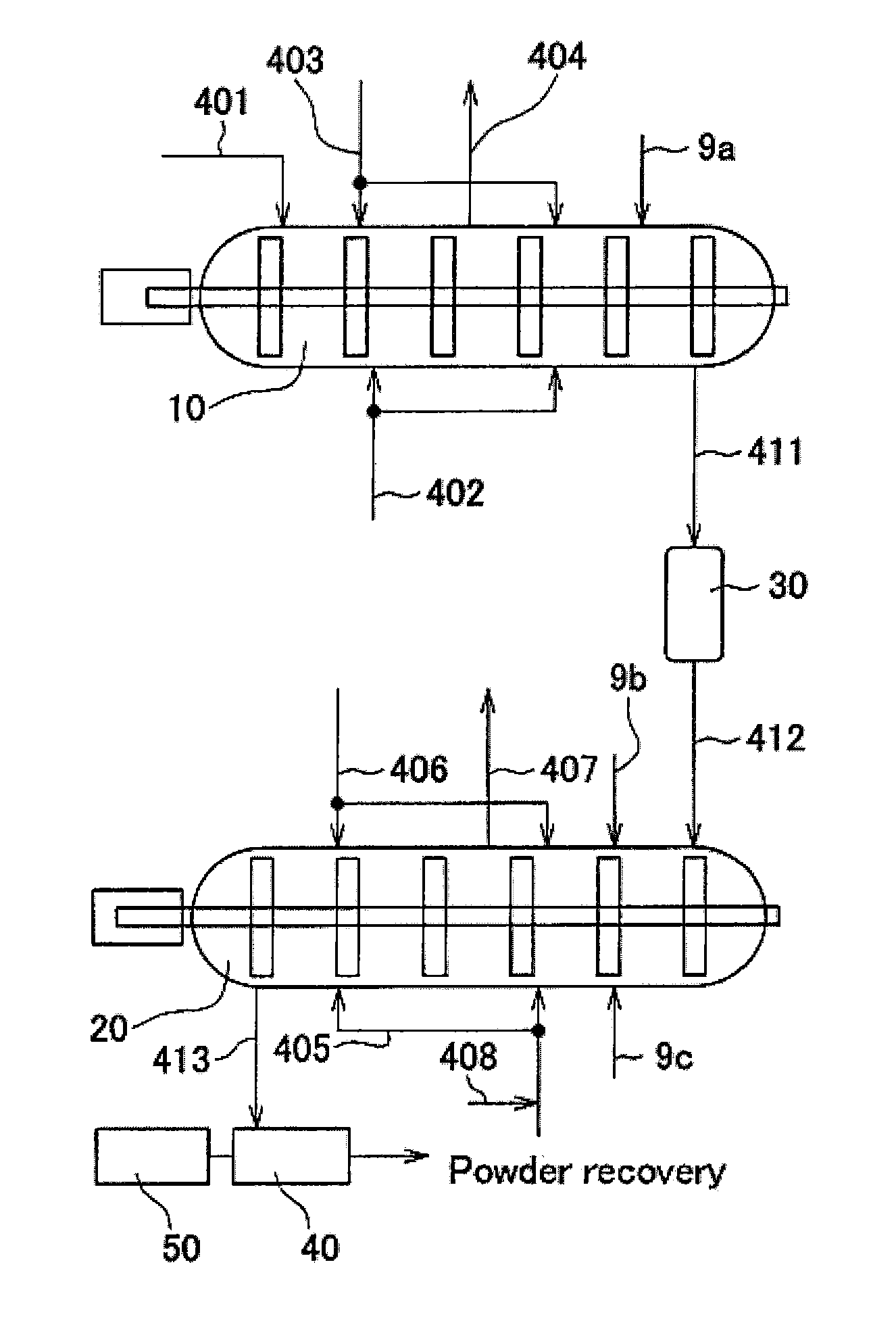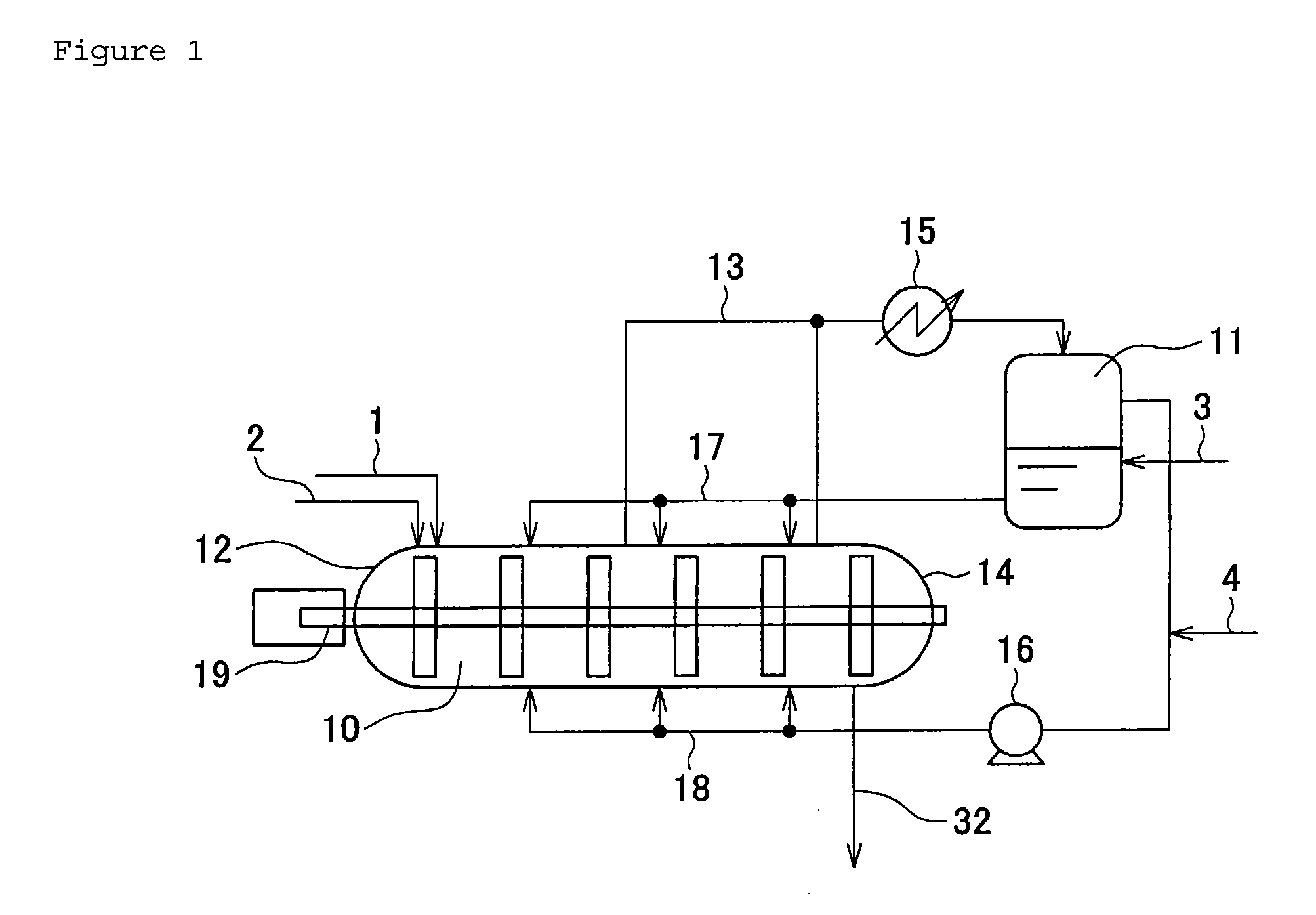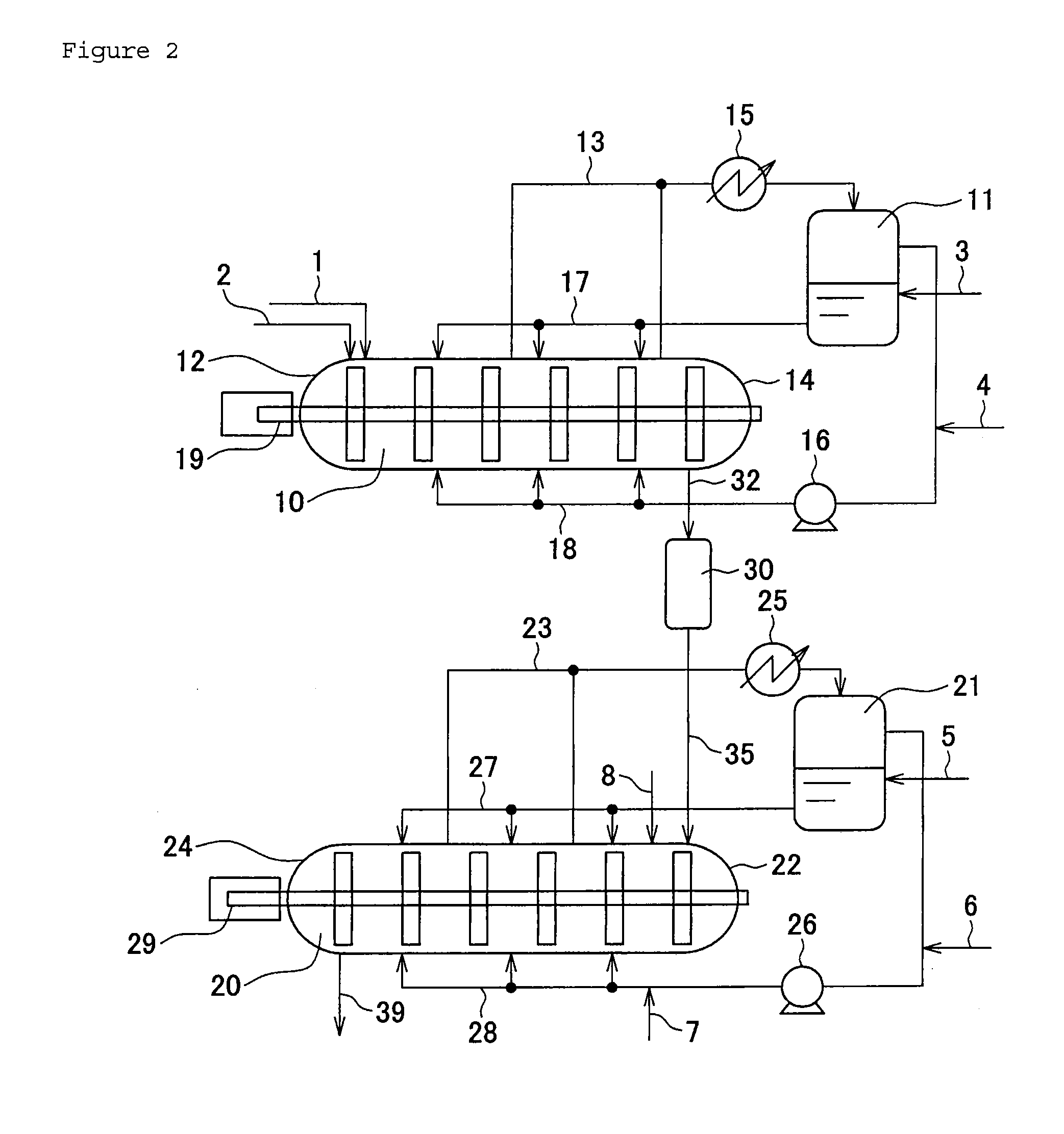Propylene-based polymer and production method therefor, propylene-based polymer composition and molded body made thereof
a technology of propylene-based polymer and production method, which is applied in the direction of mixing, chemistry apparatus and processes, etc., can solve the problems of increasing the amount of vaporized gas, fines, and adhering to the inside of the pipe or filter of the gas exhaust line system, so as to reduce the amount of fines and improve the quality of the product. , the effect of excellent product quality
- Summary
- Abstract
- Description
- Claims
- Application Information
AI Technical Summary
Benefits of technology
Problems solved by technology
Method used
Image
Examples
example 1
(1) Preparation of a Solid Component
[0360]The atmosphere of the autoclave with an inner volume of 10 L, equipped with the agitator, was sufficiently replaced with nitrogen, and 2 L of purified toluene was introduced therein. Into the autoclave, 200 g of Mg(OEt)2, and 1 L of TiCl4 were introduced at room temperature. After it was heated up to 90° C., 50 mL of di-n-butyl phthalate was introduced. Then, the reaction was conducted for 3 hours at 110° C. The reaction product was sufficiently washed with purified toluene. Then, purified toluene was introduced to adjust the total liquid amount to 2 L. One liter of TiCl4 was added at room temperature, and it was heated up to 110° C. to react for 2 hours. The reaction product was sufficiently washed with purified toluene. Then, purified toluene was introduced to adjust the total liquid amount to 2 L. One liter of TiCl4 was added at room temperature, and it was heated up to 110° C. to react for 2 hours. The reaction product was sufficiently w...
examples 2 to 5
[0370]Polymerization was conducted in the same manner as in Example 1 with the solid catalyst component (A) of Example 1 except for employing the polymerization conditions shown in Table 1. In Example 4 and Example 5, a silicon compound described in the Table was continuously supplied into the polymerization reactor 1. Results are shown in Table 1.
example 6
[0371]According to Example 1, a propylene-ethylene block copolymer was produced, instead of a propylene homopolymer. In this case, in the polymerization reactor 10, homopolymerization of propylene was conducted in the same manner as in Example 1, and in the polymerization reactor 20, copolymerization of propylene and ethylene was conducted by using mixture gas of propylene and ethylene, instead of a propylene monomer. Production amount of the copolymer in the polymerization reactor 20 was adjusted by the amount of oxygen supplied from a pipeline 408 for adding an activity inhibitor. Content of the propylene-ethylene copolymer in the final product was determined by the total production rate and the production rate in the polymerization reactor 10. In addition, ethylene content in the propylene-ethylene copolymer produced in the polymerization reactor 20 was calculated from ethylene content of the final product and the content of the propylene-ethylene copolymer in the final product. ...
PUM
| Property | Measurement | Unit |
|---|---|---|
| temperature | aaaaa | aaaaa |
| molar ratio | aaaaa | aaaaa |
| diameter | aaaaa | aaaaa |
Abstract
Description
Claims
Application Information
 Login to View More
Login to View More - R&D
- Intellectual Property
- Life Sciences
- Materials
- Tech Scout
- Unparalleled Data Quality
- Higher Quality Content
- 60% Fewer Hallucinations
Browse by: Latest US Patents, China's latest patents, Technical Efficacy Thesaurus, Application Domain, Technology Topic, Popular Technical Reports.
© 2025 PatSnap. All rights reserved.Legal|Privacy policy|Modern Slavery Act Transparency Statement|Sitemap|About US| Contact US: help@patsnap.com



